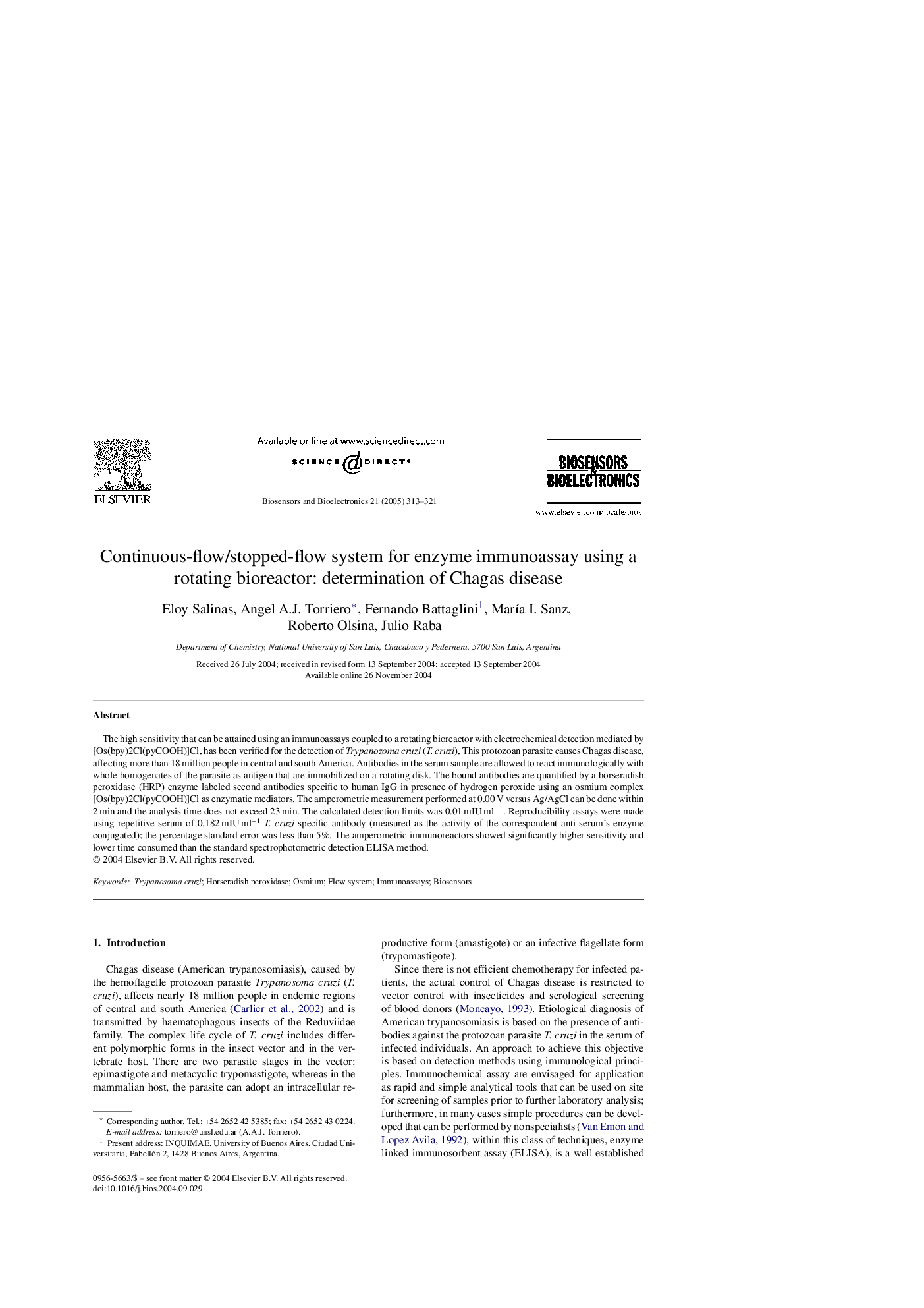| Article ID | Journal | Published Year | Pages | File Type |
|---|---|---|---|---|
| 10429738 | Biosensors and Bioelectronics | 2005 | 9 Pages |
Abstract
The high sensitivity that can be attained using an immunoassays coupled to a rotating bioreactor with electrochemical detection mediated by [Os(bpy)2Cl(pyCOOH)]Cl, has been verified for the detection of Trypanozoma cruzi (T. cruzi), This protozoan parasite causes Chagas disease, affecting more than 18 million people in central and south America. Antibodies in the serum sample are allowed to react immunologically with whole homogenates of the parasite as antigen that are immobilized on a rotating disk. The bound antibodies are quantified by a horseradish peroxidase (HRP) enzyme labeled second antibodies specific to human IgG in presence of hydrogen peroxide using an osmium complex [Os(bpy)2Cl(pyCOOH)]Cl as enzymatic mediators. The amperometric measurement performed at 0.00Â V versus Ag/AgCl can be done within 2Â min and the analysis time does not exceed 23Â min. The calculated detection limits was 0.01Â mIUÂ mlâ1. Reproducibility assays were made using repetitive serum of 0.182Â mIUÂ mlâ1T. cruzi specific antibody (measured as the activity of the correspondent anti-serum's enzyme conjugated); the percentage standard error was less than 5%. The amperometric immunoreactors showed significantly higher sensitivity and lower time consumed than the standard spectrophotometric detection ELISA method.
Related Topics
Physical Sciences and Engineering
Chemistry
Analytical Chemistry
Authors
Eloy Salinas, Angel A.J. Torriero, Fernando Battaglini, MarÃa I. Sanz, Roberto Olsina, Julio Raba,
